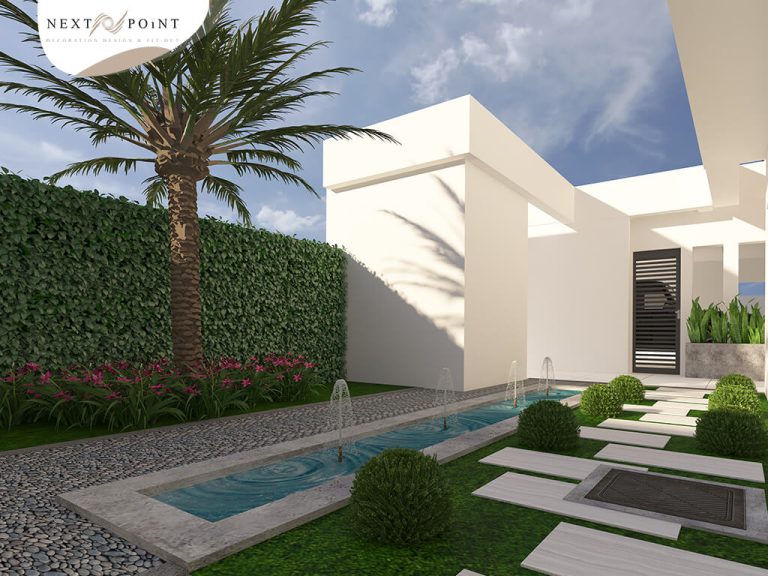Garden design
Garden design is the process of planning and creating an outdoor space that is both functional and aesthetically pleasing. The design process typically involves several steps, including:
- Site analysis: This involves evaluating the physical characteristics of the site, including the topography, soil type, and existing vegetation.
- Client consultation: This involves meeting with the client to determine their needs and preferences for the garden, including their desired use of the space, preferred style, and budget.
- Design concept: Based on the site analysis and client consultation, a design concept is developed that outlines the layout of the garden, including the placement of plantings, hardscaping elements, and other features.
- Plant selection: This involves choosing the appropriate plants for the site, taking into account factors such as the climate, soil conditions, and sun exposure.
- Hardscaping: This involves selecting and placing elements such as walkways, patios, retaining walls, and other non-plant features to enhance the usability and aesthetics of the space.
- Implementation: Once the design is finalized, the garden is constructed, including the installation of plantings, hardscaping, and other elements.
- Maintenance: Once the garden is complete, ongoing maintenance is required to ensure that the plants and other features remain healthy and attractive.
Garden design may involve a variety of styles, including formal, informal, cottage, contemporary, and naturalistic. The style chosen will depend on factors such as the site conditions, the desired use of the space, and the client’s preferences. Professional garden designers can assist with the design and implementation of garden projects, ensuring that they meet the needs and preferences of their clients while also providing functional and aesthetically pleasing outdoor spaces.

Garden landscaping
Garden landscaping involves designing and creating an attractive and functional outdoor space by combining plants, hardscaping elements, and other features to create a cohesive and aesthetically pleasing environment. Garden landscaping can involve various elements such as:
- Plant selection: Plants are a fundamental component of garden landscaping, and they can be used to create a variety of effects such as adding color, texture, and interest to the garden. The selection of plants will depend on various factors such as the climate, soil type, and sun exposure of the garden.
- Hardscaping: Hardscaping refers to the non-plant elements of a garden, including features such as walkways, patios, retaining walls, and other structures. Hardscaping elements can help define the space and create a sense of structure in the garden.
- Water features: Water features such as ponds, fountains, and waterfalls can add an element of tranquility and interest to a garden. They can also help attract wildlife to the garden.
- Lighting: Outdoor lighting can enhance the ambiance of a garden, allowing it to be enjoyed during the evening hours.
- Garden art: Sculptures, trellises, and other types of garden art can add a unique and artistic element to the garden, reflecting the owner’s personality and style.
- Garden furniture: Outdoor furniture such as benches, tables, and chairs can provide a comfortable place to relax and enjoy the garden.
Garden landscaping can be done in a variety of styles such as formal, informal, naturalistic, and contemporary. A professional landscaper can assist with the design and implementation of a garden landscaping project, ensuring that the garden meets the needs and preferences of the owner while providing an attractive and functional outdoor space.
Garden maintenance
Garden maintenance is the ongoing process of caring for and maintaining a garden to keep it healthy, attractive, and functional. Some of the tasks involved in garden maintenance may include:
- Watering: Regular watering is essential for keeping plants healthy and vibrant. The frequency and amount of watering will depend on various factors such as the climate, soil type, and the type of plants in the garden.
- Weeding: Weeding involves removing unwanted plants from the garden, such as weeds and other invasive species, to prevent them from competing with desirable plants for resources.
- Pruning and trimming: Pruning and trimming involve cutting back plants to remove dead or damaged branches, maintain a desired shape, and promote healthy growth.
- Fertilizing: Fertilizing provides essential nutrients to plants to promote healthy growth and development. The type and frequency of fertilization will depend on the type of plants in the garden.
- Pest and disease management: Regular monitoring of the garden is necessary to identify and manage pests and diseases that can damage or kill plants.
- Mulching: Mulching involves adding a layer of organic material to the soil around plants to help retain moisture, suppress weeds, and improve soil health.
- Seasonal clean-up: Seasonal clean-up involves removing debris such as fallen leaves, dead plant material, and other debris that can accumulate in the garden over time.
- Irrigation system maintenance: If the garden has an irrigation system, it will require regular maintenance to ensure that it is functioning correctly and efficiently.
Regular garden maintenance is essential for keeping a garden healthy, vibrant, and attractive. It can be done by the homeowner or by a professional gardener or landscaper. The frequency and intensity of maintenance will depend on various factors such as the size of the garden, the type of plants, and the desired level of maintenance.
We pride ourselves on delivering high-quality workmanship and exceptional customer service
Submit your details for a call back
How useful was this post?
Click on a star to rate it!
Average rating 0 / 5. Vote count: 0
No votes so far! Be the first to rate this post.
